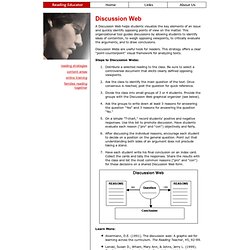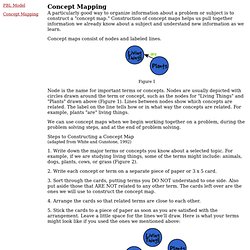

Printing Press. 20170410145108. InteractiveClassroomStrategiesandStructuresforSuccess Dr.FranciscaSanchez. Interactive Graphic Organizer. Holt Interactive Graphic Organizers "Graphic organizers are tools that help your brain think.

" - Kylene Beers Graphic organizers are an illustration of your thoughts on paper. They can help you brainstorm, organize, and visualize your ideas. Click on a graphic organizer to download a PDF of it. Once you’ve downloaded an organizer, type in your comments and print it out. Each graphic organizer below includes Teaching Notes with lessons and tips on how to use graphic organizers in the classroom. Help with PDF Files Generating, Identifying, and Organizing Details Determining Main Idea and Drawing Conclusions Order and Sequence Comparison-Contrast and Cause and Effect Process and Cycle Diagrams Evaluating and Making Decisions Persuasive and Supporting a Position Vocabulary. Literacy Strategies and Vocabulary – Google Drive. 4 Topic Foldable. Reading Educator. The Frayer Model is a graphical organizer used for word analysis and vocabulary building.

This four-square model prompts students to think about and describe the meaning of a word or concept by . . . Defining the term, Describing its essential characteristics, Providing examples of the idea, and Offering non-examples of the idea. This strategy stresses understanding words within the larger context of a reading selection by requiring students, first, to analyze the items (definition and characteristics) and, second, to synthesize/apply this information by thinking of examples and non-examples. Steps to the Frayer Model: Explain the Frayer model graphical organizer to the class. Learn More: H-mapLines MLK.pdf. Inference-graphic-organizer.pdf. Reading Educator. A Discussion Web helps students visualize the key elements of an issue and quickly identify opposing points of view on the matter.

This organizational tool guides discussions by allowing students to identify ideas of contention, to weigh opposing viewpoints, to critically evaluate the arguments, and to draw conclusions. Discussion Webs are useful tools for readers. This strategy offers a clear "point-counterpoint" visual framework for analyzing texts. Steps to Discussion Webs: Distribute a selected reading to the class. Learn More: Interactive Notebook Activity Pages. GIST template. Crosscutting Concepts Graphic Organizers - Google Slides. CALL Proposition and Support. Student dictionary Frayer template. OWL chart. Past Present Future Chart Instructional Strategy. Get a Clue about KLEWS Charts. PMI Chart. Kwl. GIST template. Student dictionary Frayer template. Interactive Learning Tool. Interactive Learning Tool. My Science Dictionary Graphic Organizer. SIOP Activities per component A Newton 2 2013 23fmkwt.
OWL chart. Microsoft Word - Poem_Two_Voices.doc - Poem_Two_Voices.pdf. Problem solving 2. Concept Mapping A particularly good way to organize information about a problem or subject is to construct a "concept map.

" Construction of concept maps helps us pull together information we already know about a subject and understand new information as we learn. Concept maps consist of nodes and labeled lines. Figure 1 Node is the name for important terms or concepts. Nodes are usually depicted with circles drawn around the term or concept, such as the nodes for "Living Things" and "Plants" drawn above (Figure 1). We can use concept maps when we begin working together on a problem, during the problem solving steps, and at the end of problem solving.
Steps to Constructing a Concept Map (adapted from White and Gunstone, 1992) 1. 2. 3. 4. 5. Figure 2 6. 7. Figure 3 8. 9. Extension: How would you arrange the following terms to fit into the concept map drawn above: Beagle, rocks, rose, hunting, guard dog, rabbit? References Shavelson, R.J., Lang, H., & Lewin, B. (1994). Wp-content/uploads/2013/02/kwl.pdf.